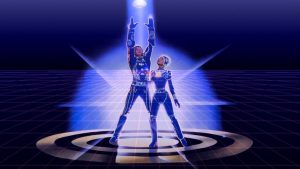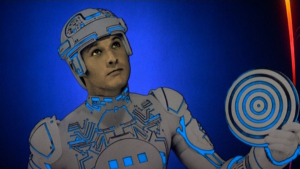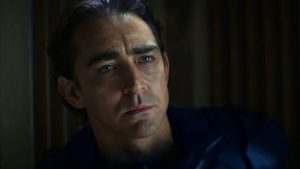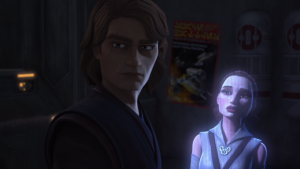Like The Lord Of The Rings before it, Frank Herbert’s science-fiction epic Dune has long been considered “unfilmable”: too huge and complex to ever successfully translate to the big screen. But Peter Jackson achieved the impossible by bringing Tolkien’s masterpiece to life (and in turn, revolutionizing the fantasy genre in Hollywood), and it looks like director Denis Villeneuve will try to do the same for Dune, with a lot of help from his incredible cinematographer Greig Fraser and his all-star cast led by Timothée Chalamet.
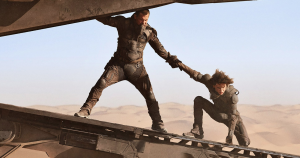
Chalamet has made a name for himself in the indie and arthouse scene, and is one of the actors whose name routinely pops up during awards season: but Dune will mark his biggest role to date, as he steps into the shoes of futuristic messiah Paul Atreides, royal scion of House Atreides and heir to the throne of Arrakis, a remote desert planet rich with the resource known as Spice: a dangerous but powerful drug that pretty much everybody in the galaxy wants to get their hands on, either to use it (Spice plays a part in spiritualistic rituals and even interstellar travel) or to control it (due to its rarity, Spice is also extremely expensive and can be heavily taxed when it’s not being smuggled illegally out of Arrakis). Although it’s been a while since I’ve read Dune (it’s probably one of the most inaccessible books ever written), I remember most of the major story beats: Paul, whose entire life is built around a series of prophecies, sets off into Arrakis’ rugged, inhospitable deserts to try and unite the planet’s indigenous people, the Fremen, against the forces of his family’s sworn enemies, the tyrannical Harkonnens, when the latter clan arrives with the intention of conquering Arrakis and winning control of the Spice. At some point, I suppose I’ll have to reread the book, but that’s the general concept: from there, it gets bigger and bigger until it becomes a cautionary tale about ecological disaster (an issue it tackles head-on and spectacularly) and religion (an issue it tackles boldly but with less success, due to its reliance on tropes regarding indigenous cultures).
For most people, the image that comes to mind when they think Dune (assuming they know about the book at all, which might be rarer now than it would be in 1965, when the novel became an instant cult classic) is that of the terrifying Sandworms, gargantuan beasts that roam beneath the deserts of Arrakis and are worshiped as divine beings by the native Fremen. Appropriately, the first trailer for Villeneuve’s Dune holds off on the reveal of the Sandworms until the very end, when one suddenly erupts from the sand and rises over Paul. I love the new design: it looks awe-inspiring but also frightening in the best way possible. I would have maybe liked it to be a little bigger, but it’s possible that, like an iceberg, more of it is concealed beneath the sand than is visible above the surface.
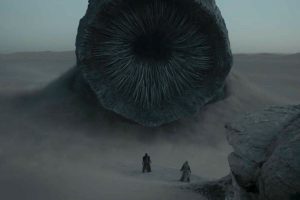
The trailer intersperses scenes of desert warfare and high-tech weaponry with beautiful shots of Arrakis’ deserts and the already radiant cast: from Rebecca Ferguson to Zendaya to Jason Momoa to Oscar Isaac (and Oscar Issac’s impressive beard, which I count as an entire supporting character), there’s not an unattractive person on this planet. And Greig Fraser, Villeneuve’s cinematographer, has captured it all in the very best lighting with hazy, orange and blue overtones (orange and blue is a color combo proven to attract attention, and it never fails to do just that). Fraser’s job is made a lot easier by the fact that, canonically, Spice turns human eyes a vivid shade of blue. Visually, this trailer is nothing short of stunning.
With regards to the story, it will be interesting to see whether or not Villeneuve has streamlined the book’s plot dramatically or fixed some of its major problems, particularly….well, the entire plot, which isn’t a white savior narrative in the usual sense, but still “has many of the same discomfiting hallmarks that we see replicated again and again”, to quote from a recent, brilliantly-written breakdown of the book’s dealings with issues of race, gender and sexuality. Getting into that issue would require talking about spoilers for the book, so I’m not going to get into that conversation here, but suffice it to say that the Fremen (who, remember, are based off an amalgamation of various Native American, Middle Eastern and African cultures) and their interactions with Paul Atreides veer dangerously close to white saviorism for reasons that are not only difficult to explain, but downright disturbing. That’s why I’m hoping there’s just as much focus on the diverse supporting cast as there is on Paul: the Fremen, in particular, but also Paul’s mother (the sorceress/concubine Lady Jessica), and his love interest (the desert warrior Chani). Surprisingly, the trailer doesn’t give much screentime to Jessica (despite her being a major character in the books), but Chani’s role does seem to have been expanded – the trailer even starts with her meeting Paul in one of his prophetic dreams and the two exchanging a heartfelt kiss, before later reuniting in real life. There’s still no word on whether the villainous Baron Harkonnen will be depicted as he is in the books, as a grotesque, homophobic caricature who preys on younger men, but I have to hope that’s not the case.

But while it’s still too early to tell how similar Villeneuve’s Dune is to Frank Herbert’s original novel, it’s not too early to guess that this movie will generate a lot of conversation heading into next year’s awards season, thanks to the out-of-this-world special effects, cinematography, production design, direction and cast. Hopefully it generates just as much money at the box-office, but that will depend on how successfully it has updated its controversial and complicated story. In a year like 2020 (or, in fact, in any year), the last thing we need is a white savior.
Trailer Rating: 9.5/10
